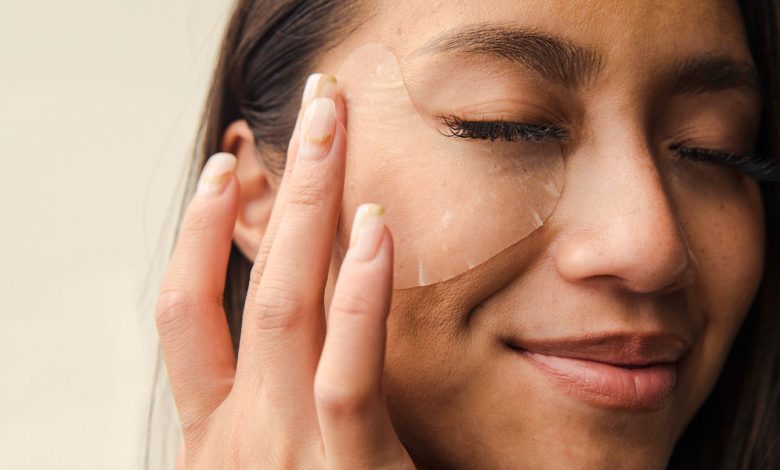What Are Wrinkle Patches, and Can They Really Give You Smoother Skin?

[ad_1]
What Are Wrinkle Patches?
A wrinkle patch is a piece of adhesive paper worn overnight to keep your muscles in place, with the aim of lessening or preventing wrinkles, says Kathleen Suozzi, MD, a dermatologic surgeon and the director of aesthetic dermatology at Yale Medicine in New Haven, Connecticut.
People typically apply these wrinkle patches to various parts of the upper body, including around the eyes, forehead, mouth, neck, and chest. Some contain popular skin-care ingredients like retinol, resembling popular sheet masks on the market, Dr. Suozzi says. Retinol can improve skin by promoting an even texture, pigmentation, and tone, according to the American Academy of Dermatology (AAD). “Many other instant formulations have a silicone base that confers an instant wrinkle-smoothing property,” she adds.
Most wrinkle patches are reusable and relatively affordable, as skin-care products go, with popular brands like Frownies and Wrinkles Schminkles. You can also splurge on luxury patches like Natura Bissé, which are infused with what the brand calls “powerful anti-aging ingredients,” including octamioxyl, conotoxin, copper, and collagen peptides.
What Dermatologists Say About Wrinkle Patches
Despite the popularity of wrinkle patches and the fact that they may leave skin feeling instantly smoother, there’s little evidence they provide lasting effects, Suozzi says.
Dr. Sobel agrees. “They’re more gimmicky than effective,” he says. “Wrinkle patches appear to work by constricting the ability to make deep facial expressions, which exacerbates the appearance of wrinkles. Rest assured, the wrinkle-reducing results are temporary and will only last a few hours at most.”
Nevertheless, wrinkle patches that are saturated in numerous ingredients focusing on hydration and reducing premature signs of aging may offer more lasting benefits. “These fall more into the category of regional sheet masks, using the patch as a means of delivering products onto the skin like a sheet mask would,” Suozzi says.
Should You Try Wrinkle Patches?
In general, wrinkle patches are safe. One group that may want to avoid them: those with sensitive skin or an allergy to adhesives. Wrinkle patches may cause redness and irritation, Sobel says. Those patches with the active ingredient retinol can also make your skin more sensitive to the sun, and the AAD advises women who are pregnant or nursing to avoid this ingredient.
As for whether they’re worth your money, it depends on your goal. If you want to temporarily reduce physical signs of skin aging, these products may help. “Wrinkle patches are great for an important event when you want to look your best,” Sobel suggests. Just don’t expect sustained effects.
For that, Suozzi says, talk to your dermatologist about preventative Botox, laser treatments, or soft tissue fillers.
The more expensive wrinkle patches with skin-healthy ingredients can complement injectable treatments such as Botox, Suozzi says. That said, you can garner similar skin-smoothing effects from cheaper products with ingredients such as hyaluronic acid, retinol, vitamin C, and alpha hydroxy acids, she adds.
[ad_2]




